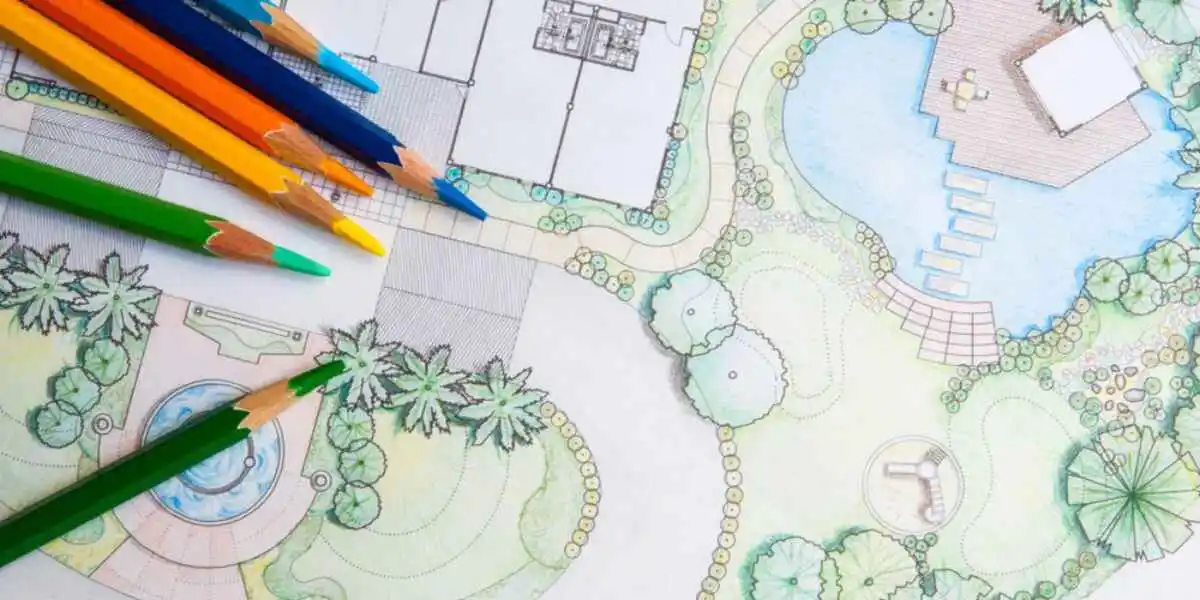Do you ever wish your backyard and front yard could be a beautiful and welcoming sanctuary?
Create Your Landscape Layout
- Evaluate Your Space: Take a good look at your outdoor area. Consider factors like sunlight, shade, slopes, and existing features. Identify areas that could serve as focal points or gathering spaces.
- Set Goals: Determine what you want to achieve with your landscape. Are you looking for a peaceful retreat, a space for entertaining, or a vibrant garden? Your goals will shape your design choices.
- Create Zones: Divide your space into functional zones. These could include a patio for dining, a cozy seating area, a play zone for kids, and flower beds. Each zone should serve a specific purpose.
- Choose a Focal Point: A focal point draws attention and adds interest to your landscape. It could be a stunning tree, a water feature, or a beautiful sculpture.
- Think About Flow: Design pathways that connect different areas of your landscape. A well-designed flow ensures easy movement throughout the space.
So, why do you need a landscape designer?
A landscape designer transforms outdoor spaces, combining aesthetics and functionality to create stunning environments that reflect your vision and lifestyle. He/she possesses expertise in plant selection, layout planning, and hardscape design, ensuring a harmonious and customized outdoor oasis.
Types Of Plant In Landscape
- Consider ornamental trees like Japanese Maple or Dogwood for height and shade.
- Low-maintenance shrubs like Boxwood or Lavender add texture and color.
- Perennials like Daylilies and Coneflowers provide seasonal interest.
- Groundcovers such as Creeping Thyme or Vinca maintain green spaces.
- Climbing plants like Wisteria or Clematis add vertical charm.
- Succulents like Sedum and Agave thrive in arid conditions.
- Include native plants for ecological balance, and herbs like Rosemary and Basil for practicality.
7 Principles Of Landscape Design
To create aesthetically pleasing and useful outdoor environments, landscape design combines creative innovation with pragmatic considerations. Here are seven basic landscape design principles that will help you create an aesthetically pleasing and well-planned landscape:
Unity and Harmony
Balance
Visual equilibrium is a way to achieve balance in landscape design. There are two types of balance
- Asymmetrical
- Symmetrical balances
Asymmetrical balance creates equilibrium by carefully distributing various pieces according to their visual weight, whereas symmetrical balance entails arranging elements in a mirror-like pattern on either side of a central axis.
Proportion and Scale
Rhythm and Repetition
Contrast and Variety
Focal Points
Functionality and Practicality
Irrigation Tips For A Healthy Landscape
Irrigation Tips For A Healthy Landscape
- Know Your Soil: Understand your soil type (sandy, clay, loam) to determine how often and how much water your plants need.
- Watering Schedule: Water deeply but infrequently. Set up a consistent watering schedule, preferably in the early morning or late afternoon to reduce evaporation
- Mulching: Apply a layer of mulch around your plants to retain moisture, suppress weeds, and regulate soil temperature.
- Efficient Watering Systems: Consider installing a drip irrigation system. It delivers water directly to the root zone, minimizing wastage and promoting plant health.
- Rainwater Harvesting: Collect rainwater in barrels to use for watering your plants. It’s an eco-friendly way to conserve water and reduce your water bill.
Different Landscaping Ideas
Native Plant Garden
Create a garden using plants native to your region. Native plants are well-suited to the local climate, require less water, and support local wildlife. Choose a variety of native flowers, grass landscaping, and shrubs to create a vibrant and ecologically-friendly landscape.
Water-wise Xeriscaping
Edible Landscape
Wildlife Habitat Garden
Japanese Zen Garden
Outdoor Entertainment Oasis
Read more stuff here!
9 Tips On Maintaining The Perfect Lawn Care?
What are The Top Tips For Decorated Home Gardening?
Well, for long health of your garden or landscape, you need proper irrigation In maintaining a healthy of landscape garden
Wrapping Up!
No matter how inexperienced you are, you can achieve landscaping excellence. You can create a memorable outdoor space that reflects your style and enhances the overall appeal of your home by following these basic principles and tips.
It is important to remember that landscaping is a creative process, so feel free to experiment and adapt as you go. With passion and patience, you’ll soon be enjoying the fruits of your labour in your own landscaped paradise.
Mahnoor Murtaza is the Content Writer, who has beed writing content for the HALSCO website since 2022. She’s been involved in content writing since 2022 and specializes in English Literature & linguistics. She has worked with us on several projects to create web content and blogs/articles.





